The History of Pennsylvania's Kinzua Bridge
Published July 26th, 2023
Photographs by Jay Kana unless otherwise noted.
In Northwestern Pennsylvania, nestled in the Kinzua Bridge State Park is where you’ll find the once majestic Kinzua Bridge as it towered above the valley below. Created in 1882, rebuilt in 1900 and tragically brought down by a tornado in 2003, there’s plenty of history of this revolutionary-when-built bridge.
Here’s the history of the bridge, which is certainly worth visiting and experiencing.
When was the Kinzua Bridge built?
Construction of the Kinzua Bridge/Viaduct started on May 10, 1882 and ended August 29, 1882; that's only 94 working days. Once complete, the Kinzua Bridge Viaduct was the highest of its kind in the world.
Why was the Kinzua Bridge built?
We can thank the challenging terrain for it. Specifically, the President of the New York, Lake Erie and Western Railway, Thomas L. Kane needed to create a branch line from the main line in Pennsylvania, connecting Bradford south to the coalfields in Elk County. Laying 8 miles/13 km of rails over tough and rough terrain would be too challenging, so the decision was made to build a bridge across the Kinzua Valley from the existing wrought iron with steel Once completed, the Kinzua bridge spanned 301 feet (92 m) in height and 2,052 feet (625 m) in length.
Image via Alleghany National Forest
Why was the Kinzua Bridge rebuilt in 1900?
By 1900, locomotives were over 80% heavier than 20 years prior, meaning the original iron bridge structure couldn't support the additional weight. May 24th, 1900, saw the beginning of the deconstruction of the bridge; construction of the new bridge started on May 26th.
Built by the Elmira Bridge Company, it utilized 3,358 short tons (3,046 t) of steel, costing $275,000.
Between 100 and 150 crew members worked 10-hour days for nearly four months to finish the new steel frame. Each tower had to be replaced and it took approximately one week to complete each one.
In a terrible oversight, the bolts securing the towers to the anchor blocks were not replaced and thus reused from the first bridge, becoming a catalyst to the bridge's collapse over 100 years later.
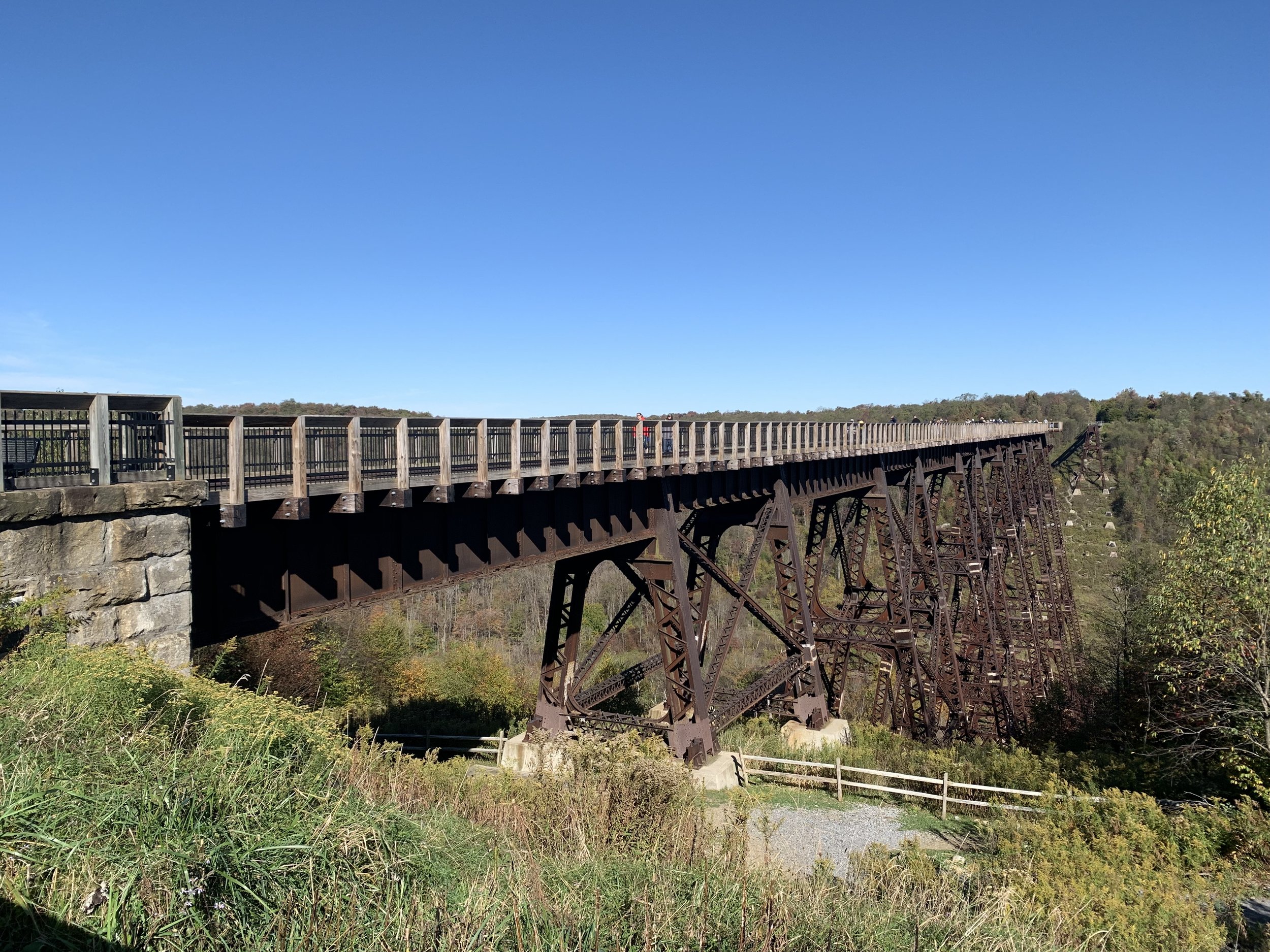
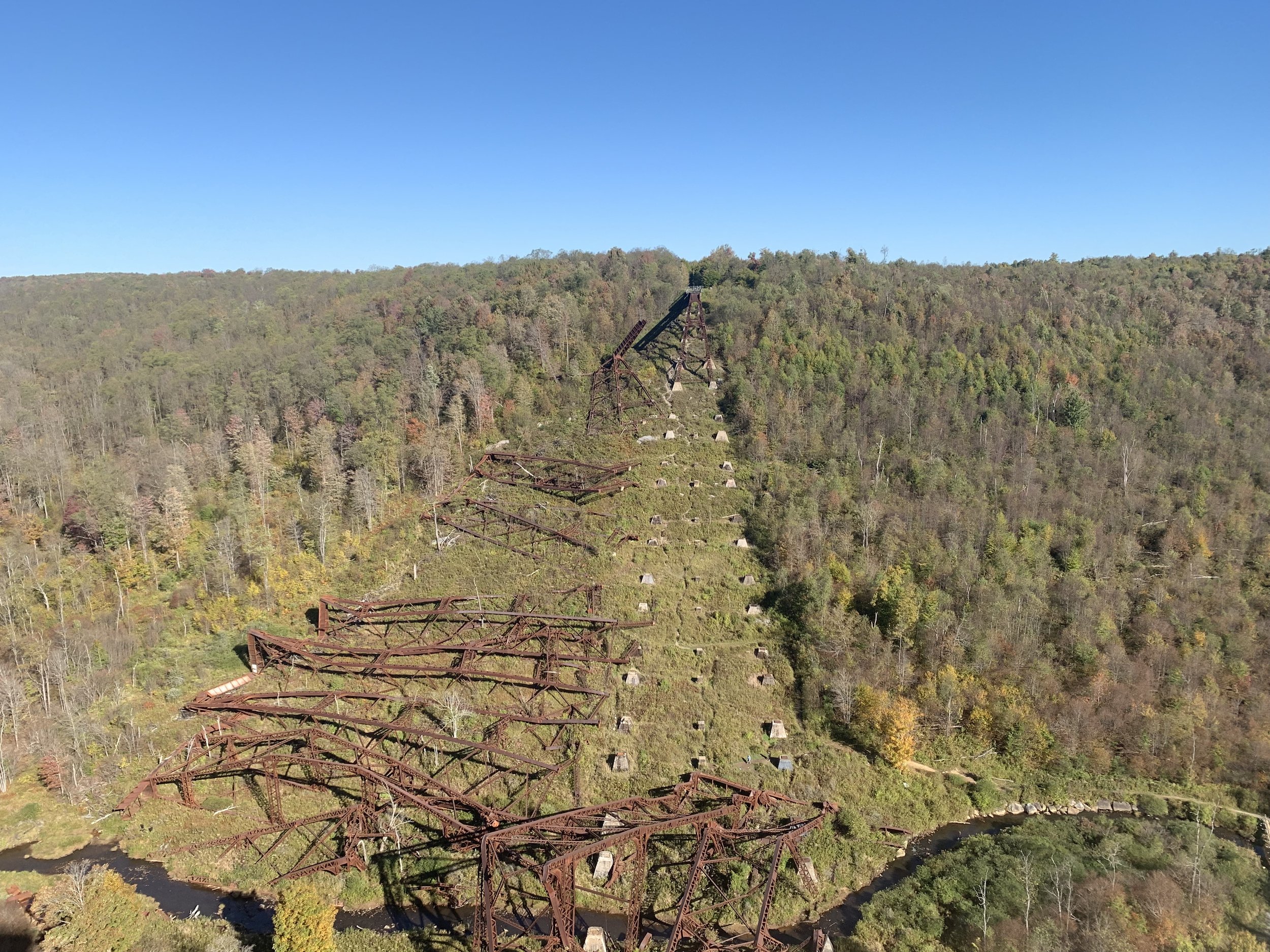
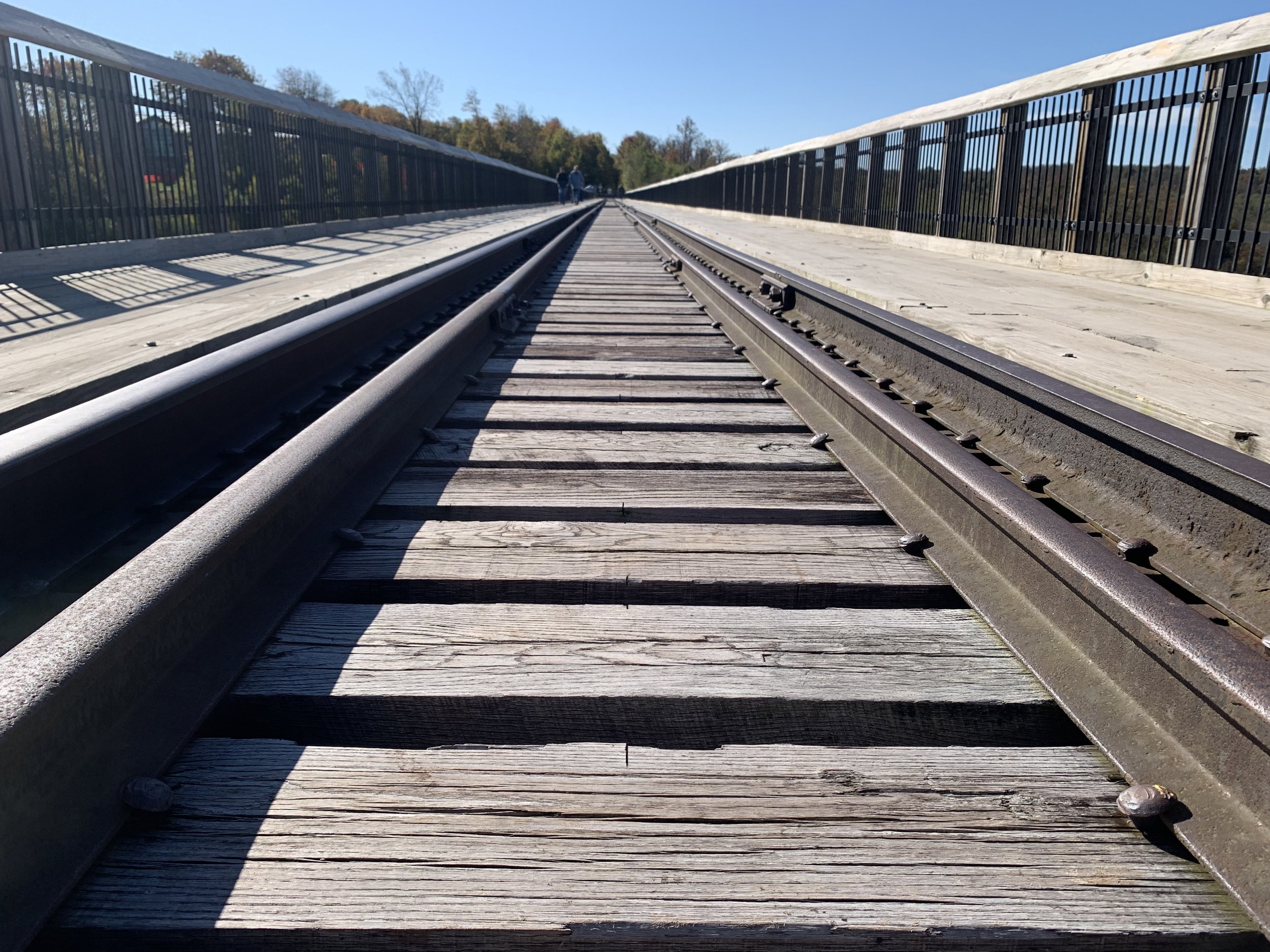
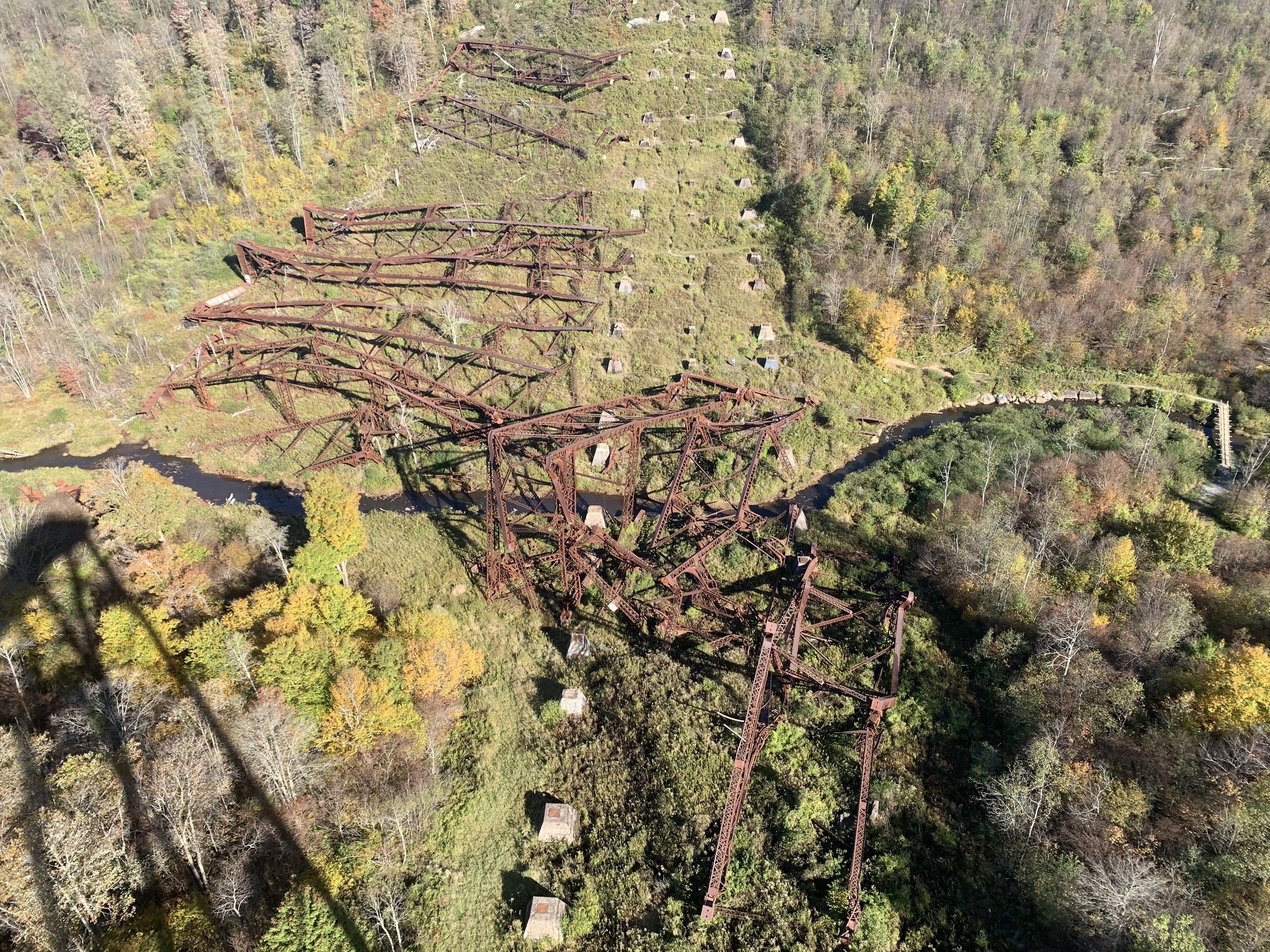
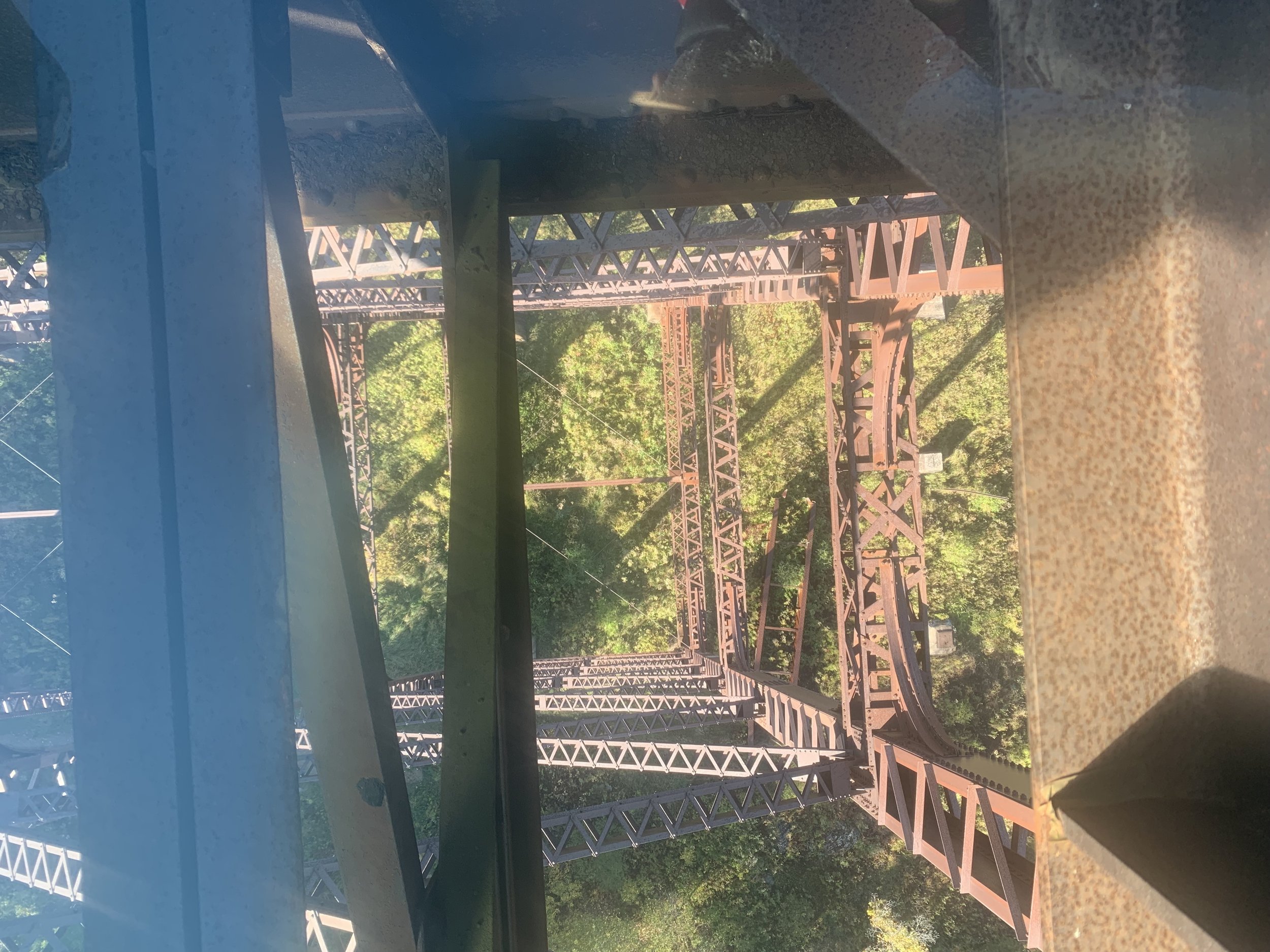
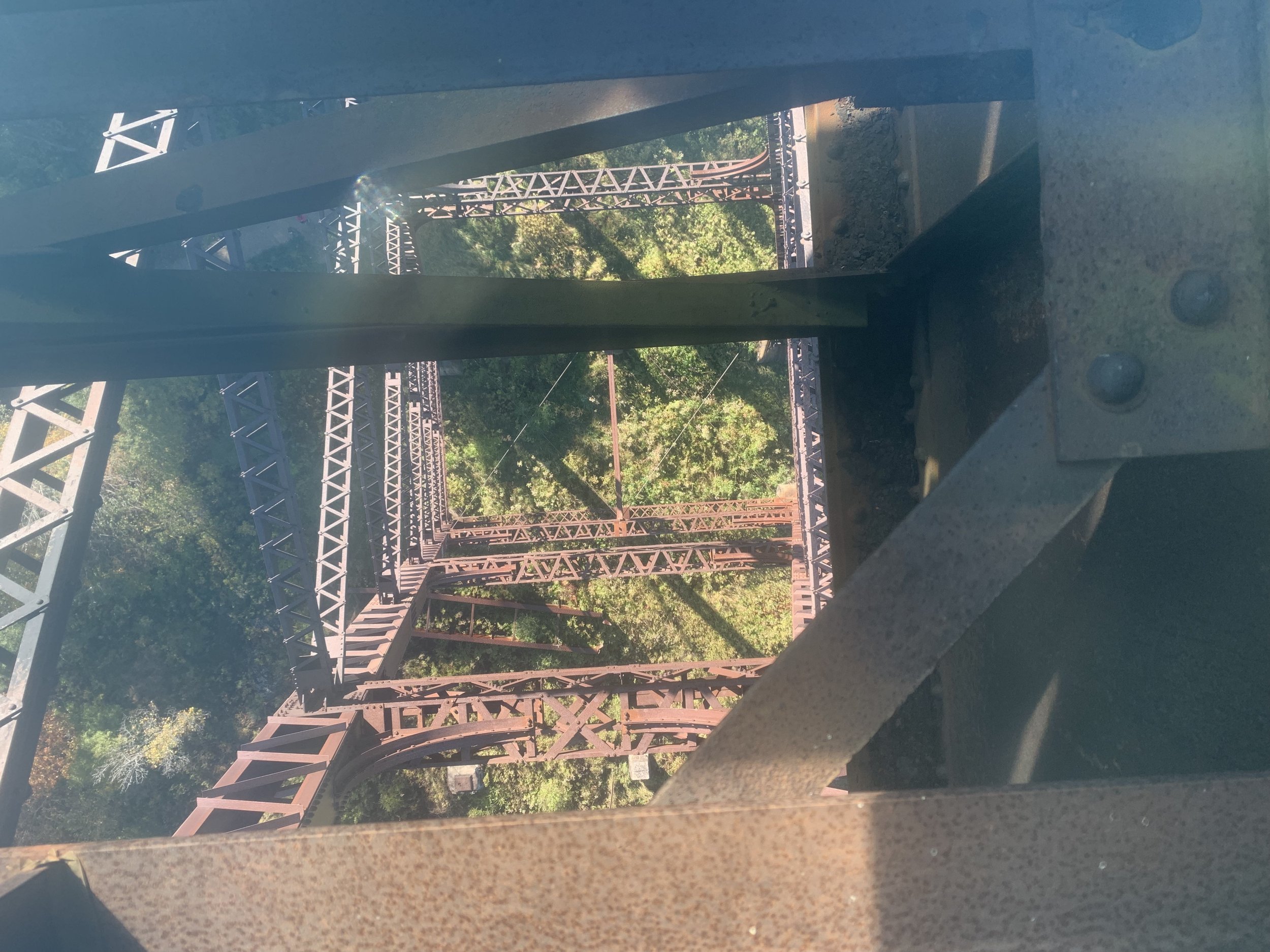
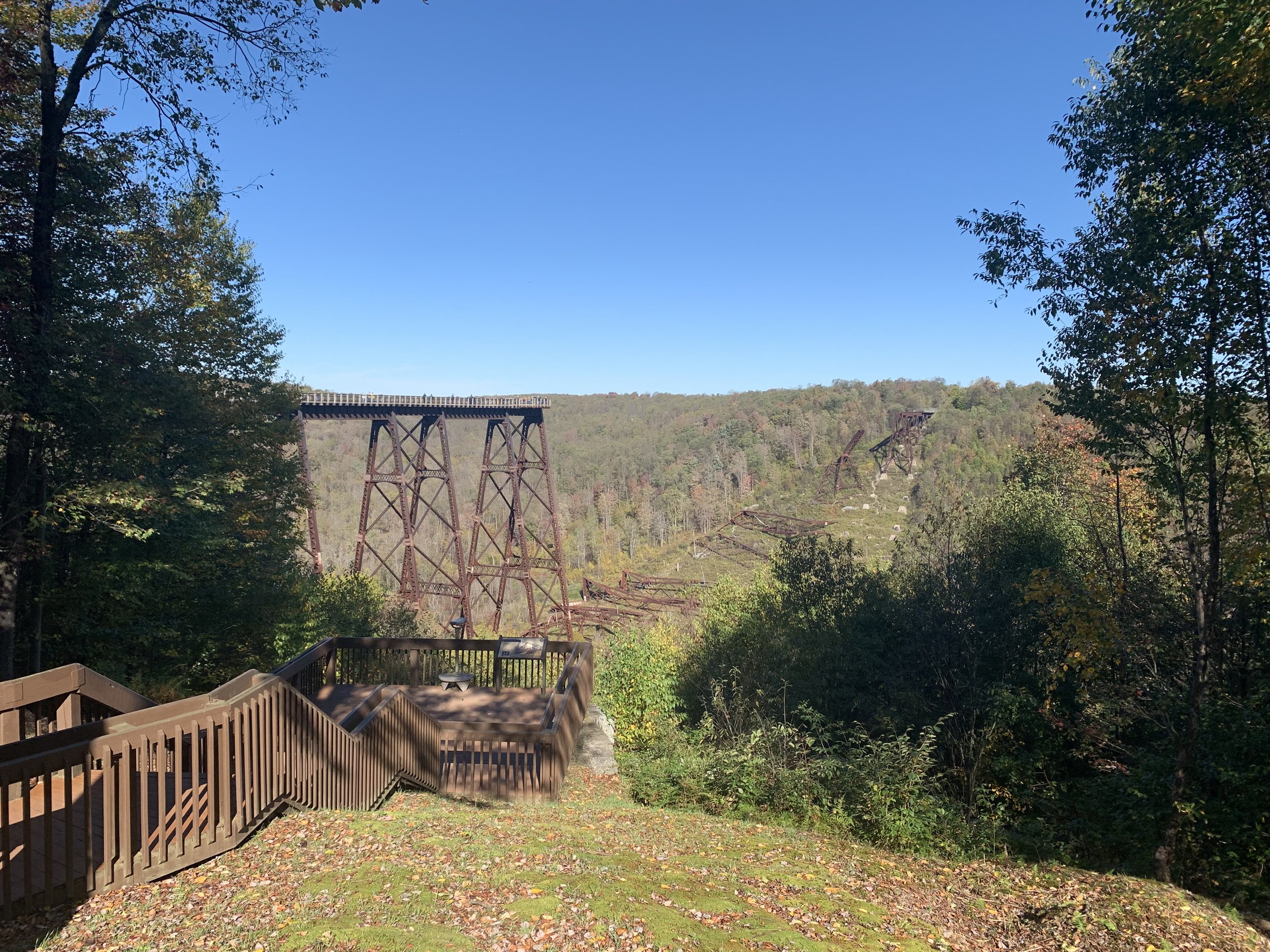
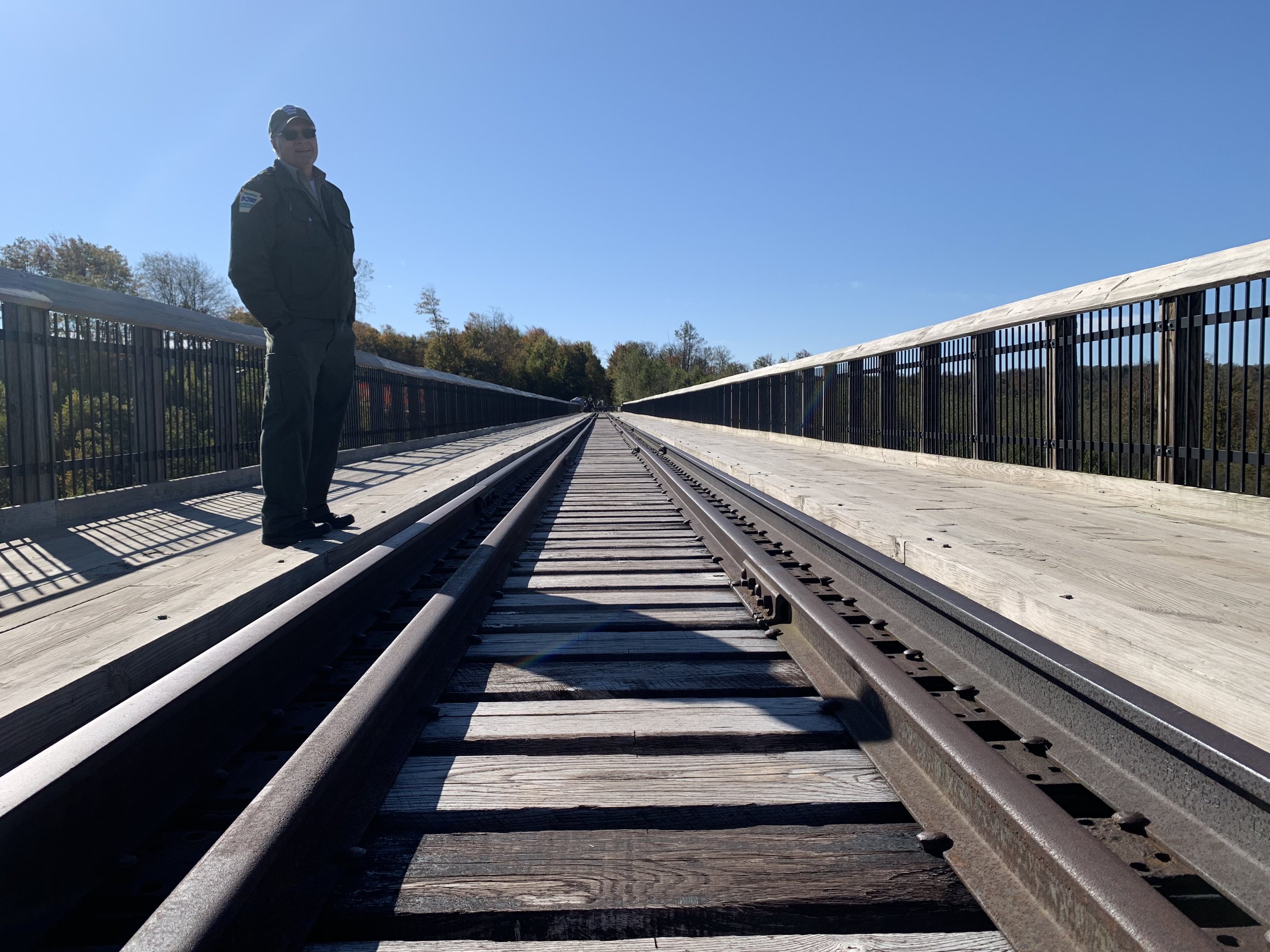
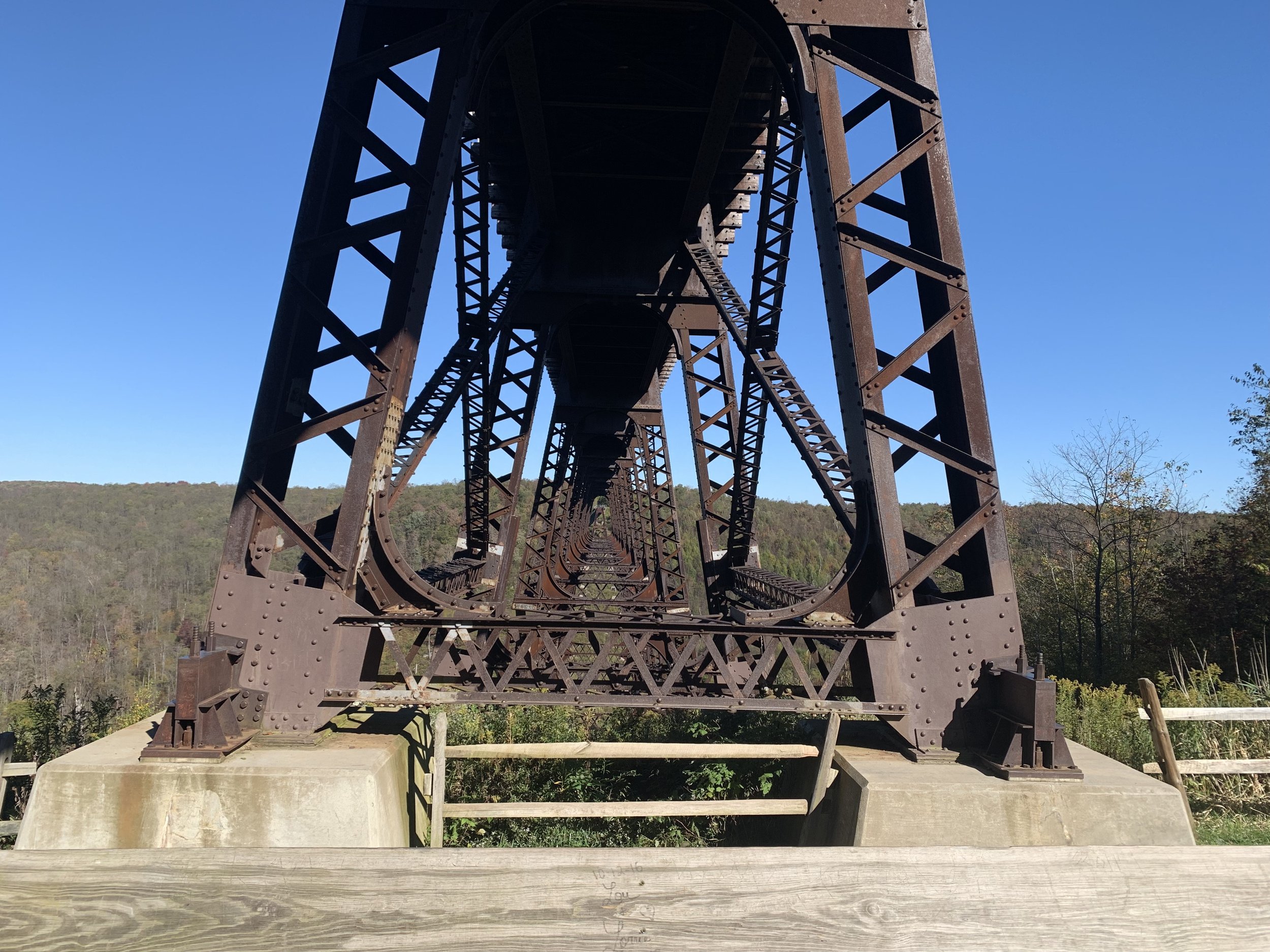
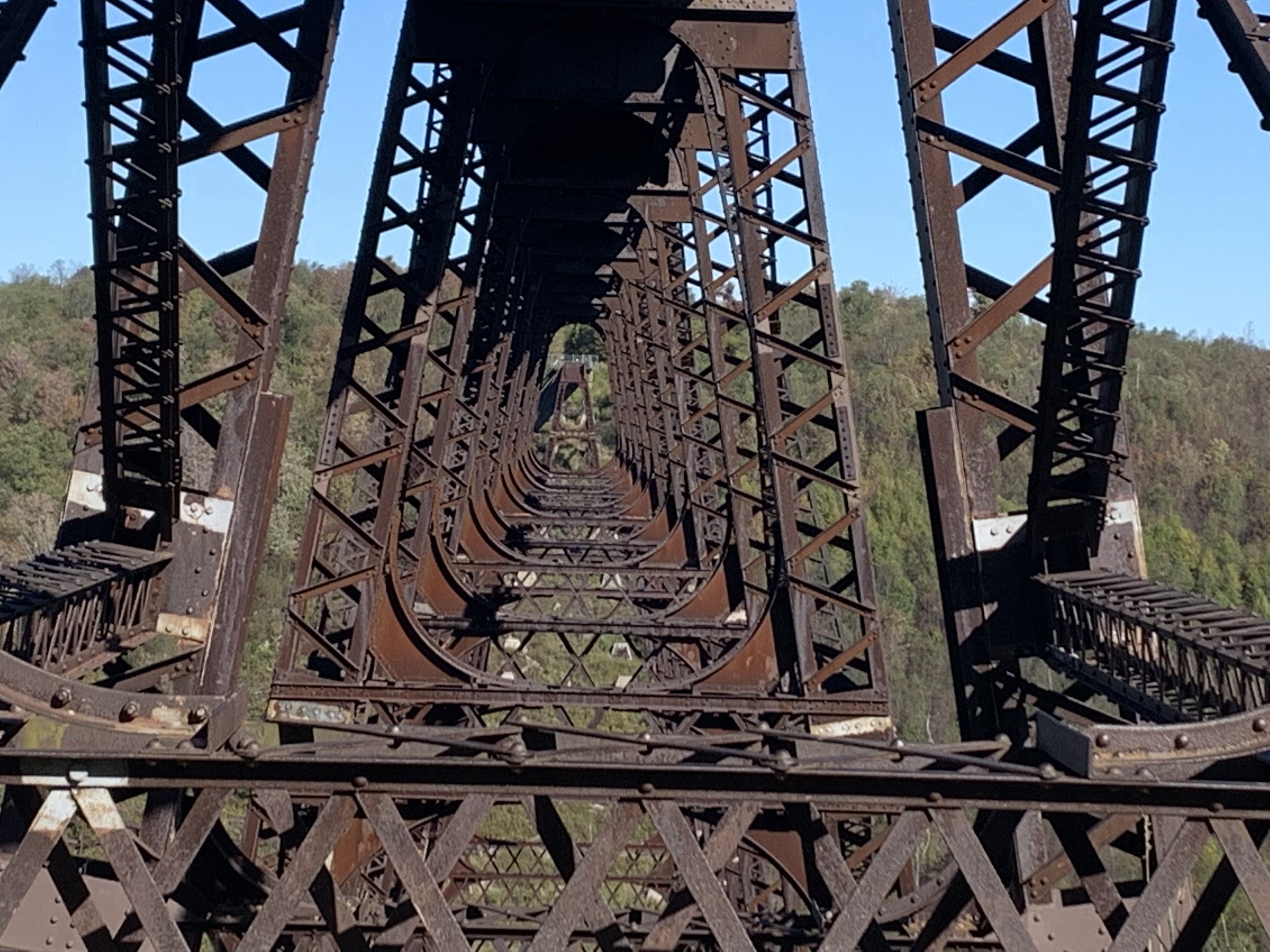

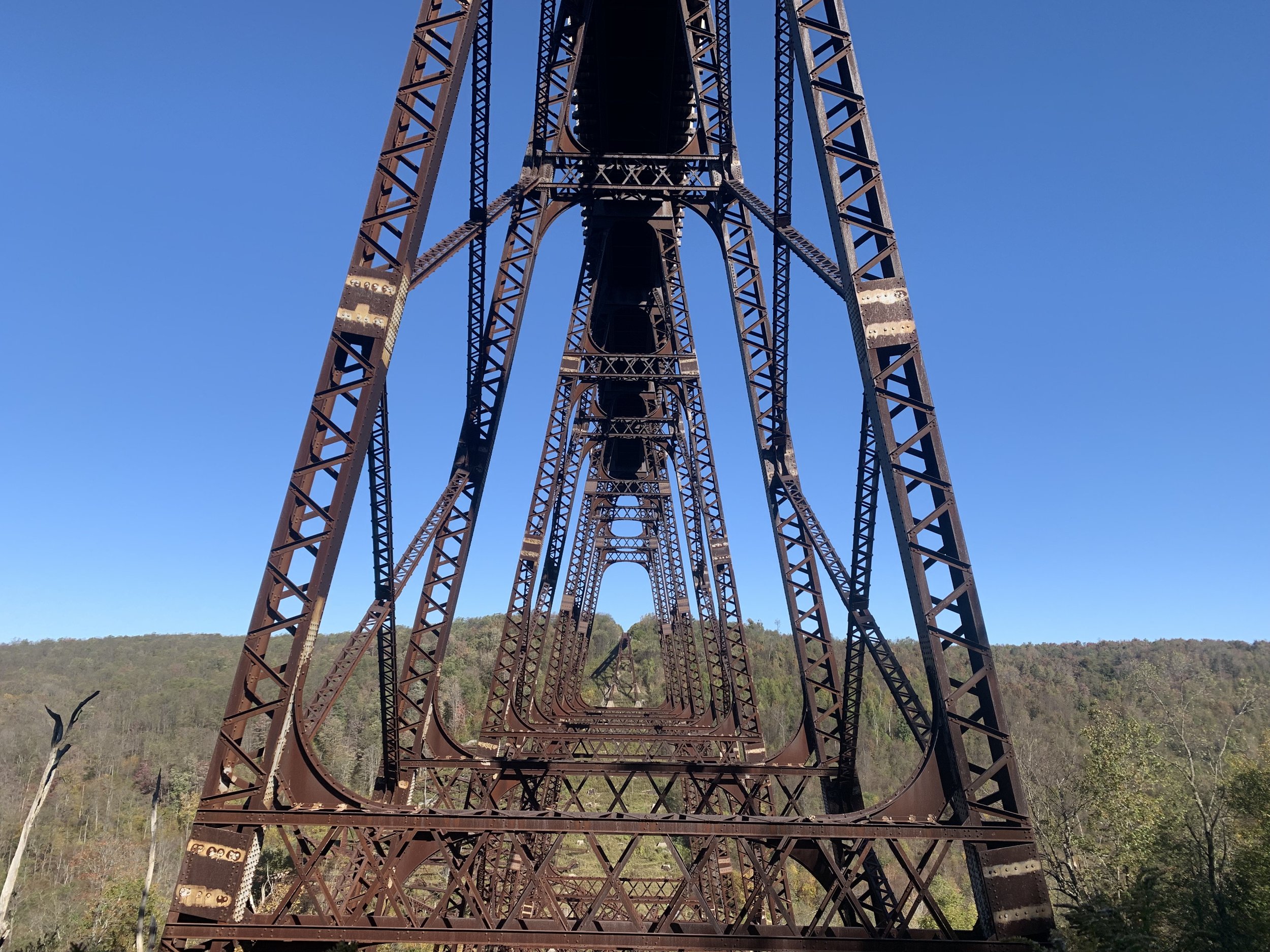

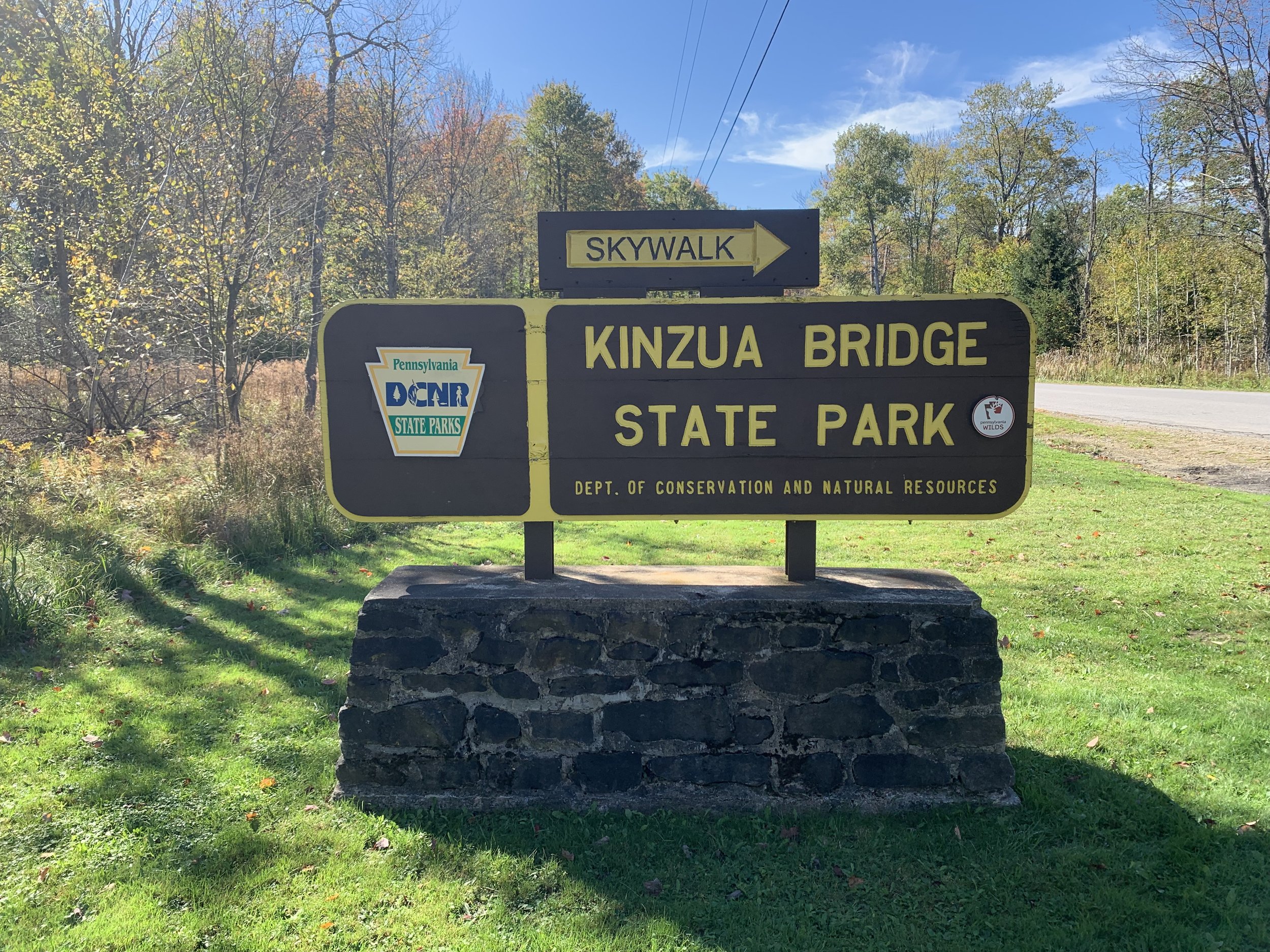
What caused the Kinzua Bridge to collapse?
On July 21, 2003, an F1-ranked tornado with winds up to 94 mph/151 km/h tore through. resulting in 11 of the 20 bridge towers collapsing and destroying the majority of the bridge.
The reused bolts from the original bridge also played a part in its demise.
Investigators determined the details of the damage included that Towers 10 and 11 collapsed first, Towers 12 through 14 were lifted from their foundations, moved slightly northwest and then miraculously set back down in place, being bound by the railroad tracks.and Towers four through nine collapsed as the tornado moved north. Lastly, as the winds moved,Towers 12 to 14 finally collapsed.
Was anyone hurt or injured during the bridge collapse?
Miraculously, no!
State park officials stopped a tourist train that used the bridge and prohibited pedestrians from walking across it a year earlier due to a high risk of collapse.Specifically, high winds and the rusting steel caused structural concerns. Restoration of the bridge started in 2003 and thankfully, the crew that was working on the day the bridge collapsed had just wrapped up for the day.
Why wasn't the Kinzua Bridge rebuilt after the tornado?
Simply put, money. As in the state of Pennsylvania didn't have USD $45 million to spend. Or perhaps they didn't want to. Keeping the broken bridge in its aftermath turned into a visitor/tourist attraction illustrating how savage nature can be.
Instead, plans were carried out to create a 225- foot high SkyWalk/observation deck leading to nearly the end of the last standing pieces of rail. Interestingly, this was built upon six restored towers, and spans 600 feet onto the bridge.
Additionally, there are several hiking trails in the valley to enjoy and get a unique perspective of the bridge's remains.
Can I visit the Kinzua Bridge?
Absolutely! It's located in the 339-acre Kinzua Bridge State Park, in McKean County.
It was repurposed as a pedestrian walkway in 2011 and you can walk up to 600 feet out on theremaining support towers, gazing into the Kinzua Gorge and through the glass floor platform.
The park is open year-round but can seasonally vary. Visit their website for updates.
There are also hiking trails through the valley, and a visitors center with interactive exhibitions about the park and its history.







